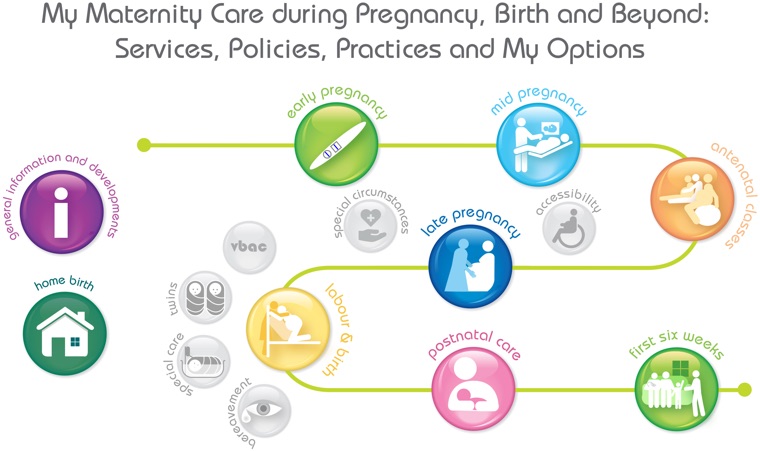
General Information and Developments
Twins
How many twins and other multiples are born in my maternity unit?
A multiple pregnancy is considered a more complex pregnancy and although all 19 maternity units provide care for twin pregnancies, not all provide maternity care for the more complex cases. Triplets, however, are always born in select maternity units with the appropriate expertise and services. Twin pregnancy care does not fall within the scope of the 2 midwifery-led units in Ireland.
Back in 2016, we asked the units for their recent figures.
| Number of multiple births in 2014: Twins (sets): | |
|---|---|
| Number of multiple births in 2014: Triplets (sets): | |
| Number of multiple births in 2014: Quads (sets): | |
| Number of multiple births in 2014: Other (sets): | |
| Number of multiple births in 2015: Twins (sets): | |
| Number of multiple births in 2015: Triplets (sets): | |
| Number of multiple births in 2015: Quads (sets): | |
| Number of multiple births in 2015: Other (sets): |
We took the following figures for multiple pregnancies for 2016 and 2017 from the publicly available monthly Maternity Patient Safety Statements (MPSS).
| Number of multiple births in 2016: | |
|---|---|
| Number of multiple births in 2017: |
What services and supports are available antenatally for women pregnant with twins or more?
Care for twin pregnancies varies from standard to highly specialised, depending on the type of twins, their position in the womb, whether they share a placenta or amniotic sacs or have other complexities. Care for some twin pregnancies will involve minimal additional screening such as scans and blood tests but little other interventions if mother and babies remain healthy, whereas some twin pregnancies are more complicated.
Triplet pregnancies generally require more specialised care and are usually referred to the larger (tertiary) hospitals.
We asked the hospitals what services and supports they provide to women during a twins (or more) pregnancy. Not all units answered this question. Of those that did, answers included special clinics (6 units), consultant involvement in planning care, special antenatal classes, guidelines for care, giving information and support, information about TAMBA (twins and multiple births association), additional scanning and familiarisation with neonatal care if a premature birth is anticipated.
| Multiple pregnancy - supports: | Show All |
|---|---|
Are there separate antenatal classes for women pregnant with twins or more?
Specialised classes for women pregnant with twins or more are only offered in 5 out of 19 units – typically the larger maternity hospitals.
| Multiple pregnancy classes offered: | Show All |
|---|---|
| No. of classes per course: | |
| Length of class: | |
| Time & location: | |
| Partners welcome: | |
| Average no. of parents per course: | |
| Fee: |
If I am expecting twins or more, what are the implications for birth?
Care for twin births varies from standard obstetric care to highly specialised care. Some twin births are straightforward requiring minimal extra interventions, whereas other twin births are more complicated and require caesarean births or other interventions like induction.
Triplets (or more) are referred to larger hospitals to be born by caesarean.
We asked the hospitals for details on labour management for a twin birth. Not all units answered this question but obstetric-led care is the norm and is considered best international practice. Twins can be born vaginally or by caesarean, depending on the type of twin pregnancy, position of the babies, their gestation and overall health and well-being of the mother and babies. The highest reported rate of vaginal births for twins was 60% with most units reporting significantly lower levels than this. In units with twin vaginal birth rates of 35% or below, are women being given the information, support and encouragement they need from their caregivers to have the confidence to attempt a vaginal birth?
Several units have induction of labour as part of their normal care for twin births, but others indicated supporting spontaneous labour where appropriate. Care is generally individualised, and obstetricians and paediatricians are typically present at the birth in addition to midwives providing labour care. Several units specified that both babies would be monitored during labour.
| Implications for birth: | Show All |
|---|---|
| Twin birth statistics | All mothers |
| Twins - % vaginal birth | Show All |
| Twins - % caesarean birth | Show All |
If I have twins/triplets/quads etc., will I get additional support after the birth?
The vast majority of units stated that they provide additional support to mothers of twins or more. Units often provide information about TAMBA (twins and multiple births association) and give additional help with establishing breastfeeding. (As this question was in the Special Care part of our survey, some of the answers are specific to babies in special care or NICU.)
| Additional support: | |
|---|---|
| Details: | Show All |